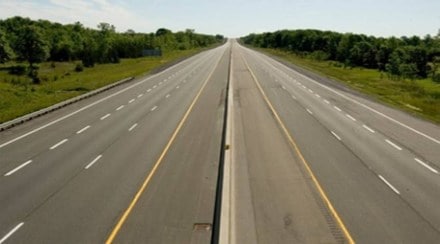The 34,800-km highway development programme under Bharatmala Pariyojana Programme (BMP), launched in 2015 with an estimated outlay of Rs 5.35-trillion, may see a six-year time overrun and a near 100% cost overrun, rating agency ICRA has estimated.
Apart from the road wings of the ministry of road transport and highways and National Highways Infrastructure Development Corporation (NHIDCL), the National Highways Authority of India (NHAI) are implementing the BMP. The programme initally was projected to be completed by FY22. Assuming an annual execution of around 4,500-5,000 km from FY23 onwards, the BMP programme is expected to be completed in FY28, ICRA said.
According to ICRA, in the last seven years just around 20,632 km or 60% of the targeted highway length has been awarded, as of December 2021. As of March 2022, 8,134 km or around 23% of the total length has been completed.
“The major reasons for delay can be attributable to delay in land acquisition, significant rise in land acquisition cost, and the Covid-19 pandemic,” the rating agency said in a note. Assuming NHAI awards 6,000-6,500-km highway length in the current fiscal, ICRA said awards of the entire length under BMP would be completed by next fiscal, provided awarding does not get hampered in the election year of 2024 as it did in 2019. In that case, award completion may also extend to 2025. In line with the implementation plan, engineering, procurement and construction (EPC) and hybrid annuity mode accounted for 98% of total awards under BMP to date.
“The completion cost of BMP is estimated at Rs 10.63 trillion after factoring in cost escalations up to December 2021 and is 99% higher than the initial estimates, owing to substantial rise in land acquisition cost and steep increase in input costs. The final completion cost would be further higher by at least 15-20% given the impact of rise in commodity prices on construction costs,” it said.
In terms of funding mix, BMP initially envisaged around 40% each contribution from internal & extra budgetary resources (IEBR) and gross budgetary support including toll collections & TOT proceeds with the balance 20% from private sector investment. However, given the relatively higher share of EPC, overall dependency on IEBR is on the higher side. So far, the funding mix was skewed towards debt, said Vinay Kumar G, sector head, corporate ratings, ICRA.
Given the strong pipeline of operational road projects, ramp-up in asset monetisation becomes critical for funding the balance BMP cost in addition to continued budgetary support.
